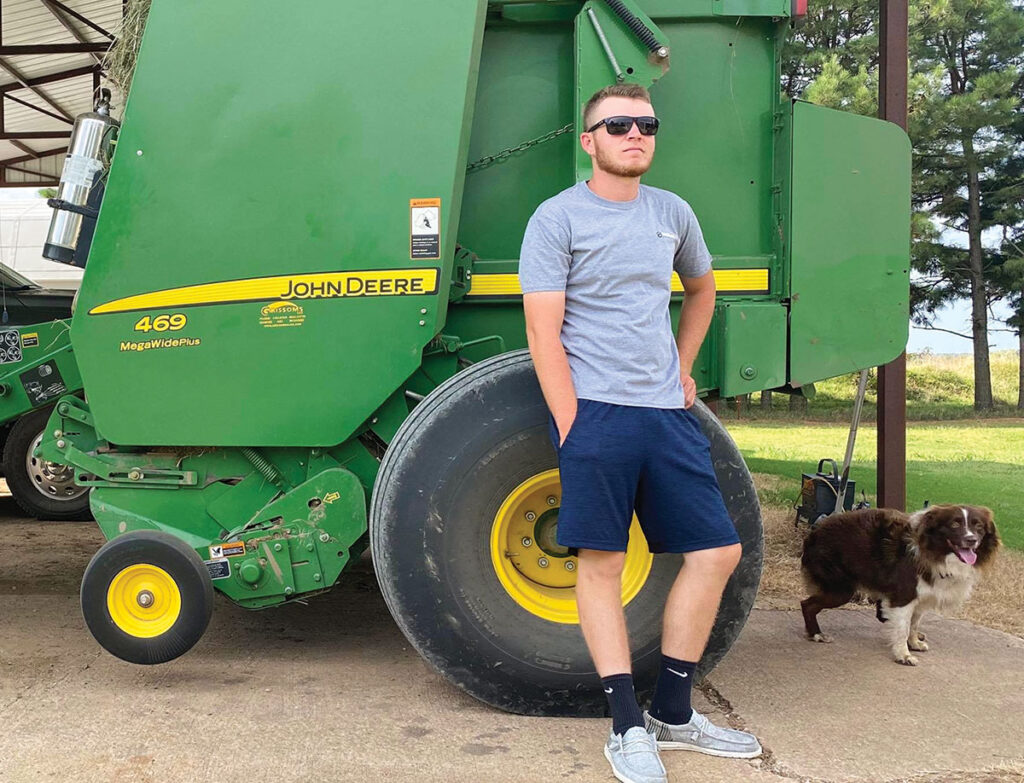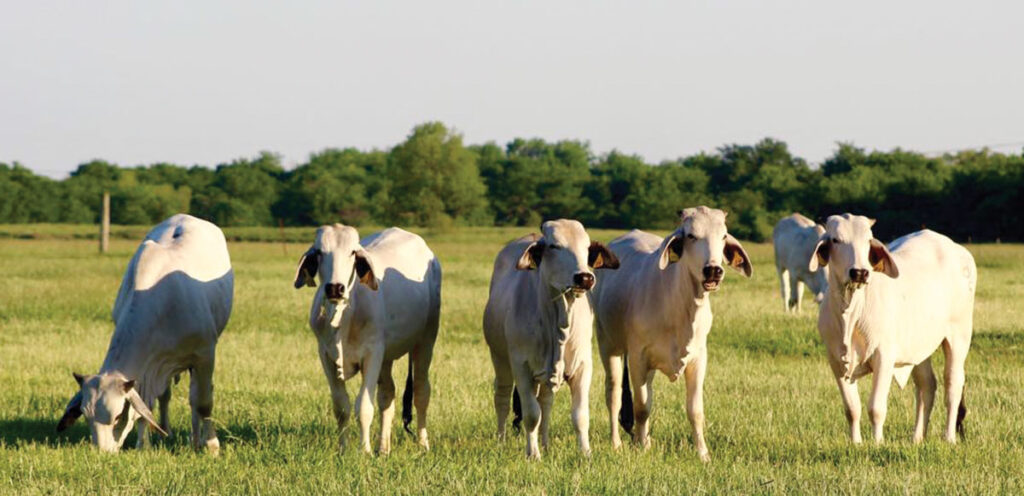
Wyatt Ezell bought back his family’s original property and added more land to it
COUNCIL HILL, OKLA. – Wyatt Ezell remembers almost every detail about his family ranch. As a young boy in Eastern Oklahoma, he worked and played on land that had been part of his lineage since the early 1900s.
Back when Wyatt’s great-grandfather purchased 160 acres, Oklahoma had recently become a state. It was not only a dairy farm, but it also produced peanuts and cotton.
By the 1950s, the property grew into a sprawling 650-acre dairy farm in Muskogee County.
However, through the years, Wyatt saw the land sold off and it dwindled to 150 acres. At the same time, the business had become a shell of its former glory.
“I grew up here and it was actually going downhill,” Wyatt said. “My grandpa was taking care of everything and he was getting older and it was kind of looking like it was going to disappear. He basically had sold everything out to where it was just a little hobby at that point, and it wasn’t really a profitable operation.”
Despite that, Wyatt had a special feeling for the place and hated to see the shape it was in. So, he decided to do something about it.
Wyatt bought the ranch from his grandfather in 2015 with designs to bring it back to the way he remembered it.
However, taking over the ranch was only the first step in what Wyatt knew was going to be a long journey back to profitability for the Ezell Cattle Co., and he was going to have to do it with little to no money to put into the operation.
“I started from there and did odds and end jobs and other things for different people for several years until I could get enough money to get the cattle herd built back up and take back some land that was originally the family land,” Wyatt said.
While seeing the ranch make money again was important, Wyatt’s main priority was getting his family’s land back. Seeing the land that had been part of his heritage since around the time Oklahoma had become a state in someone else’s name did not sit well with him.
It took five years before Wyatt was able to buy back all of the original property. Since then, he has nearly doubled the size of the ranch to around 1,200 acres.
“That was my first goal was to get it all back together like it used to be,” Wyatt said. “I know in today’s world if I was wanting to do this for a living, you know, a 100-percent full time, that wasn’t going to be enough for me to survive off of. But once I got to that point, I knew that I could do some off-and-on odd and end jobs until I could expand enough to make it where I can do it full time; and that’s exactly what I did. But most of all the land is still family owned. If it’s not owned by me, it’s now owned by someone in the family, and I lease it from them. That was my goal; get it all back together and keep it that way. And I’d like to see it stay that way forever. It’s got a lot of history.”
To bring it all together, Wyatt connected with another rancher a couple of years ago, which helped infuse his operation with some much-needed capital.

“I took on a partnership with another individual in my neighborhood. Then that’s kind of what really helped me get everything back together,” Wyatt said. “I’ve got a 50-50 partnership with another guy that’s got land. That basically is all just right here in my area within a few miles of me. I take care of a bunch of cattle for him on 50-50 splits. And that helps me. That helped me get all the family land back together and make it back to where it’s a profitable endeavor.”
Once Wyatt got his land back, and more, he was able to stop doing side jobs for other people, like welding, custom hay bailing and fence building, and just focus on his cow/calf operation. With more than 600 head of cattle that he had to tend to daily, that is enough work to take up all of his time.
“I’d say normally hay season is what takes up more time than anything,” Wyatt said. “We’re generally bailing anywhere from 5,000 to 7,000 tons a year now. And that takes up pretty much every day and all day in the summertime, other than this year. We’re in a pretty bad drought and some things have happened this year and we haven’t had near as much hay to bail. But I’d say bailing hay, and then feeding the cattle in the winter, that’s seven days a week, regardless of the weather and time.”
Wyatt’s herd is made up primarily of Angus females, which they run with Charolais bulls. That is the combination that he feels works best for his customers.
“We’ve done all kinds of different stuff. We’ve run Hereford and Angus, Red Angus bulls. We’ve done a lot of different things and went different routes where we were trying to maybe raise some replacement females,” Wyatt said. “We ended up going to the Charolais deal about three years ago and it’s just proven that the calves are going to be heavier and stouter out of the Charolais bulls. And we’ve really just stuck with that. It’s kind of our reputation now. Our people expect our calves to be Charolais cross caves at this point. I haven’t seen anything that’s made us wanna change at this point.”
Once the cattle have been raised and are ready to be sold, the work continues for Wyatt. Unlike past generations, he needs more than one option if he is going to get the best prices for his cattle. That is especially true this year as inflation has jumped higher.
“One of the biggest things I’ve learned is to not expect to do the same thing every year if you want to make it,” Wyatt said. “We have sold cattle in every different way you could possibly dream of selling them. From internet sales to a private treaty, to sale barns. Every year is different and there’s always a different way to make a few more dollars if you are open-minded to doing something different. That’s a big thing that’s kind of kept us going is just being open-minded.”
Now that Wyatt has the business back on track, he wants to make sure and keep it in the family. At some point, he is hoping to pass the property and cattle company down to the next generation.
If that does happen, Wyatt will look to pass down knowledge and experiences that will hopefully keep them out of the same predicaments the ranch encountered in past years.
“The most important thing I would say is if you’re wanting to survive, have the least amount of debt possible to start out with,” Wyatt said. “If at all possible, your cattle need to be paid for in cash somewhere or you know you can get a loan on the land, but if you get a loan on the land and a loan on your tractors and then a loan on your cattle, they won’t pay.
“There’s just no way you can’t make a living that way. I’ve seen so many people lately that they don’t understand that there are so many more input costs go into a cattle operation that you just don’t see on paper, and you don’t expect and you can’t see coming. There’s just no way to make a living if you owe the bank for everything.”







